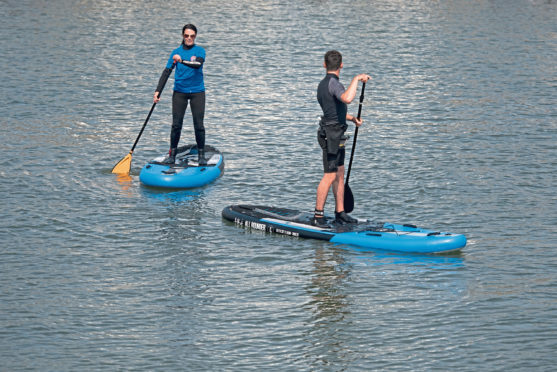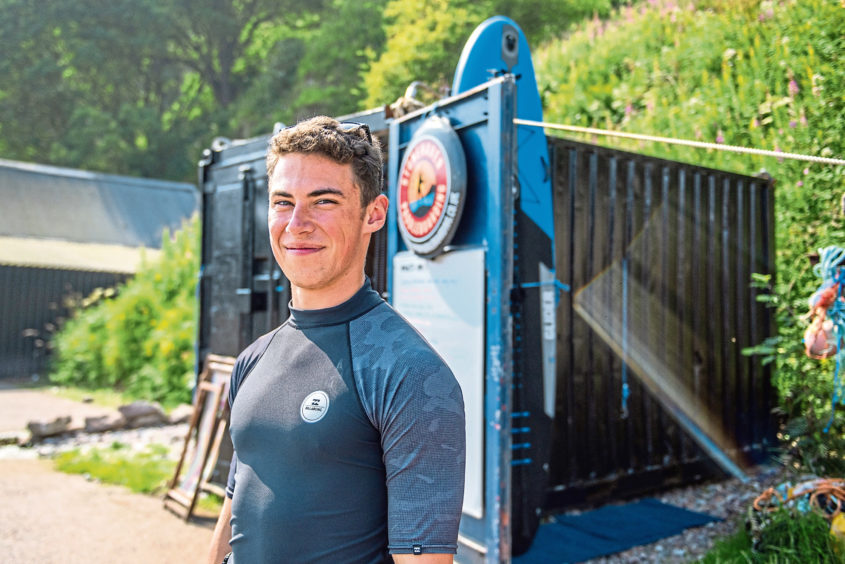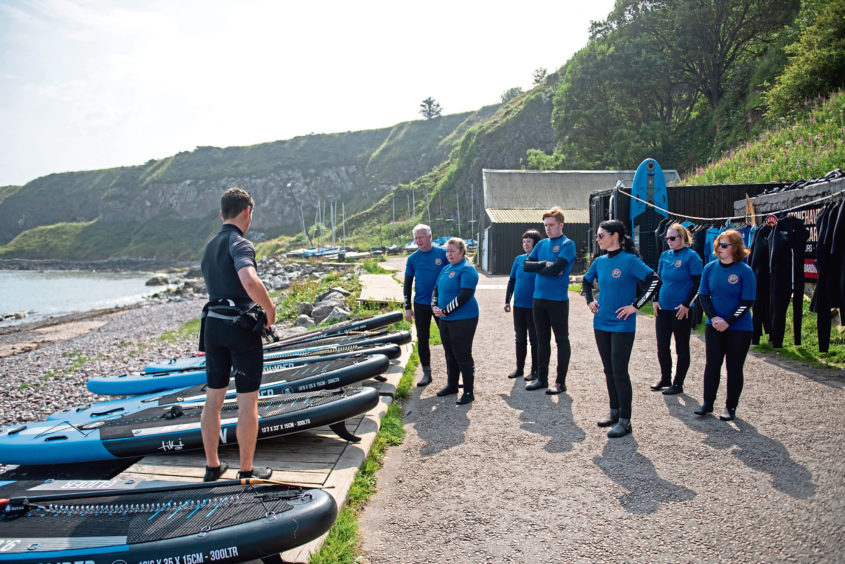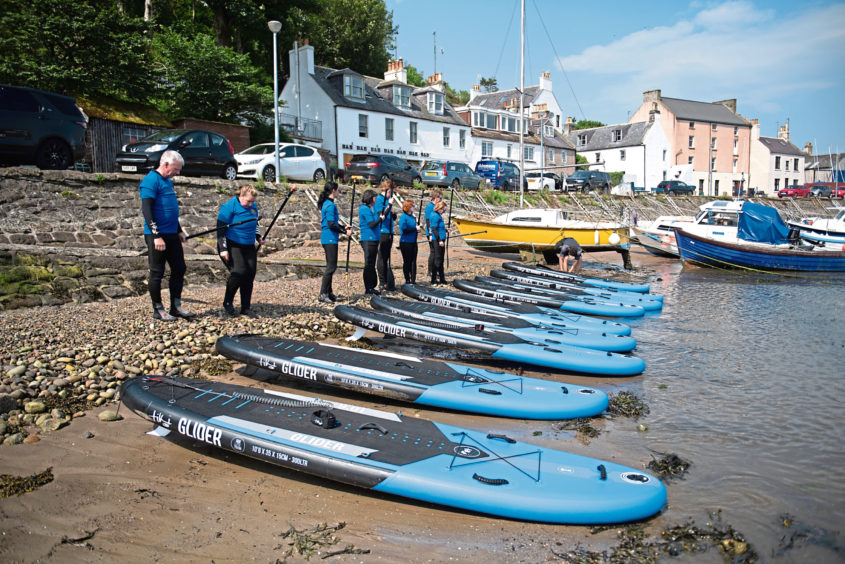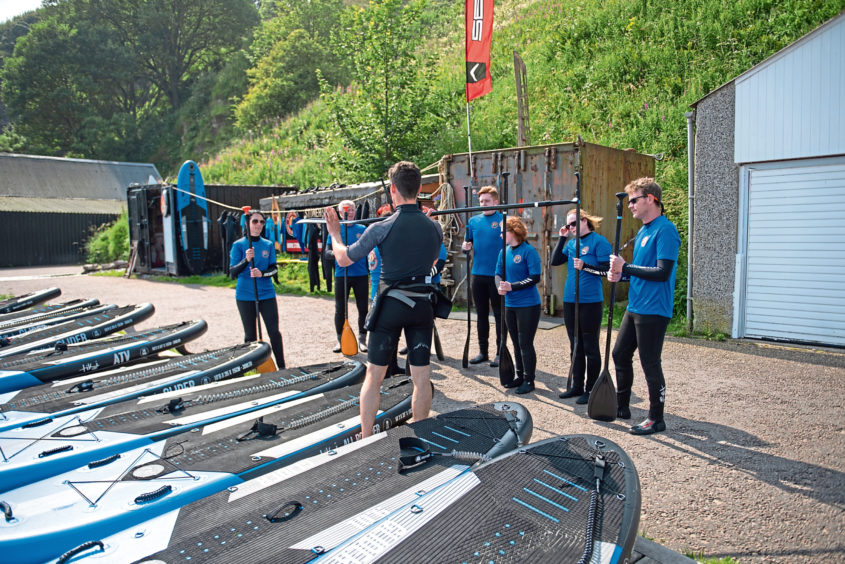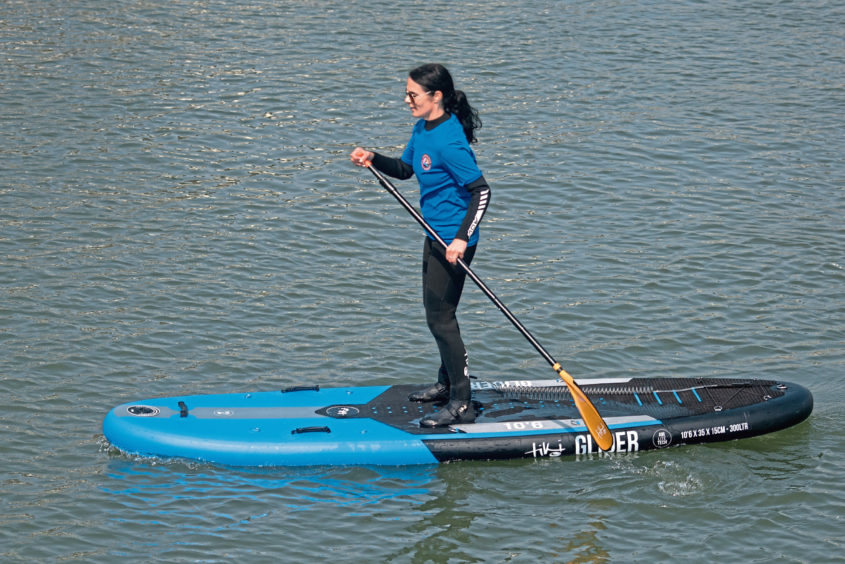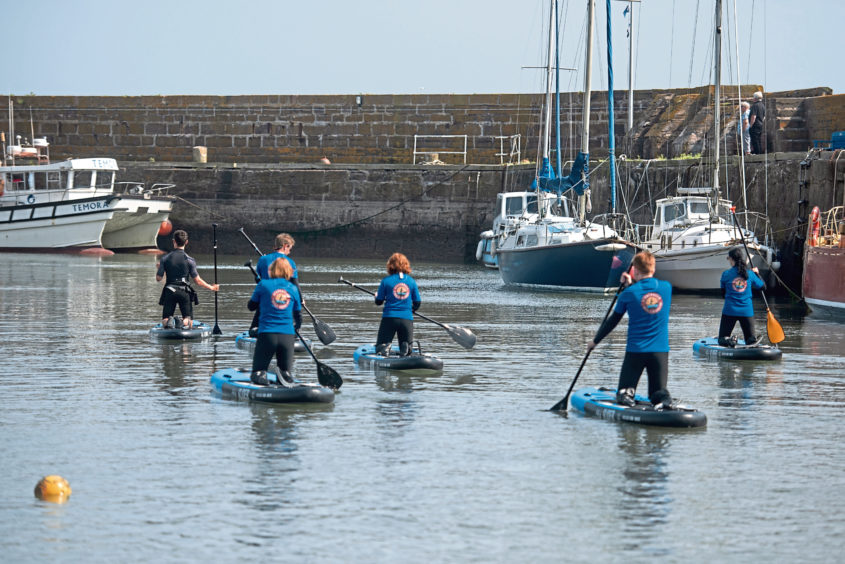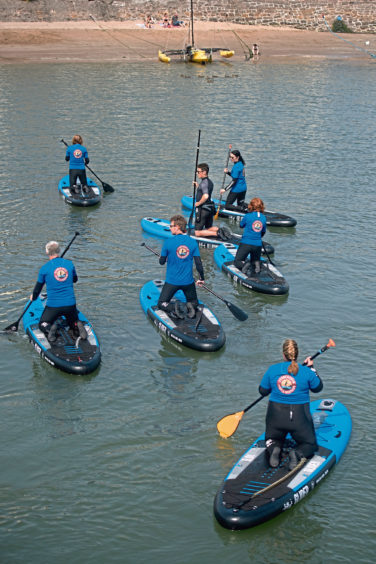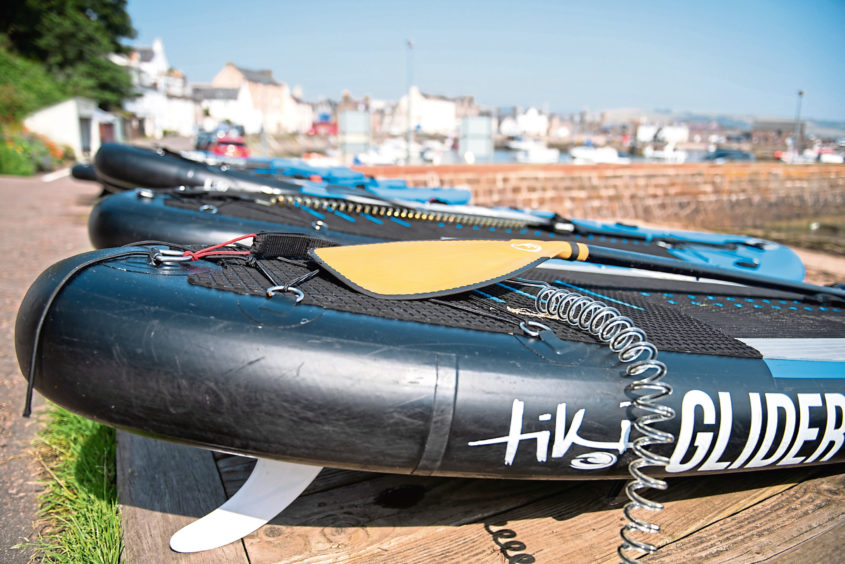Gayle heads out into the North Sea for a stand-up paddleboard session…
Paddleboarding on a calm, glassy loch is one thing. Attempting it on the sea, where waves crash and pound against you, is another matter altogether.
I realise this as I’m desperately try to stay afloat my board and being buffeted further and further out into the North Sea.
Sure, it’s the middle of summer, but the water is pretty chilly and I’m not sure I want a full-force dunking.
I’m in a class of six people who have headed out with Stonehaven Paddleboarding for a two-hour SUP (stand-up paddleboarding) lesson.
Most folk have had a bash at the sport previously, but some are complete beginners.
Angus Jacobs, a strapping 21-year-old with a mop of curly brown hair, is taking the morning session.
His dad, Dave, set up the company last year after realising there was a niche in the north-east just waiting to be filled.
And standing in the sheltered, picturesque harbour, with sailing yachts and fishing boats and a sandy beach, it’s easy to see the location’s appeal.
Once Angus has kitted us out with wetsuits and T-shirts, he gives us a quick briefing, explaining that the inflatable paddleboards miraculously deflate into a rucksack so you can take them on your travels.
You do get rigid versions, he tells us, but the inflatable ones are more stable, meaning there’s less chance of falling off.
Once we’ve tethered our boards, which are like surfboards but longer, wider and more buoyant, to our legs to ensure they don’t float off and disappear, we head down to the harbour and wade into the shallow water.
When Angus deems we’re far enough out, we then climb aboard, kneeling only at this stage.
Having paddleboarded a few times in the past – on Clunie Loch, Loch Faskally, Loch Lomond and on a river in Florida – I’m feeling fairly confident.
As we paddle round the harbour on our knees where the water is flat, I manage okay, but when Angus encourages us to stand up and head for the “chop” – the swell of the sea – my body tenses and my legs turn to jelly. Clearly, I’m less proficient at this than I’d imagined!
“The best bet is to stand in the middle of the board, where you’re most stable,” he says.
He shows us how to turn our boards, first on our knees, and then standing up using both the side stroke and the back stroke.
Some of us also learn a faster, more powerful stroke which I initially get wrong and eventually master.
“Think of performing the movement as less of a squat and more of a hinging from the waist like a dead lift, as you’d do in the gym,” explains Angus.
The cross bow turn is a tricky manoeuvre and one I’ll need to return for a second lesson to master.
If you get it right, it’s a brilliant tool that enables you to turn quickly and more efficiently.
“Once you relax and get comfortable with that, you can head out into more adventurous territory, exploring caves and coves along the coast,” says Angus.
There’s a fair bit of swell bouncing off the rocks today, and when we head out to sea “to get a feel” for the waves, I come tumbling off. To be honest, it’s wonderfully invigorating and refreshing – not freezing as I’d imagined.
And once you fall in, you realise there’s nothing else to fear, and your confidence soars.
We finish the session with a fun “game” back in the harbour.
Basically, in pairs, we stand on a board and try our best to destabilise each other. Shrieks of laughter can be heard for miles as one by one, we all fall in. Great!
I’m reluctant to get out of the water and pledge to come back again. I’d love to improve my paddling skills enough to be able to confidently tackle the waves and explore the coast’s secrets.
“It just takes practise,” says Angus. “You can learn at all levels with us, and we run beginner and taster sessions, private sessions, right up to coastal tours, river trips and SUP socials for competent paddlers.”
The sport is one of the fastest growing watersports and catching on big time in Scotland, whether on lochs, rivers, canals or the sea.
It’s a brilliant way of seeing the world from a different perspective and a fantastic form of exercise that’s brilliant for core stability, cardio and strength. And you have to admit, it’s a pretty cool thing to do, too!
info
Stonehaven Paddleboarding runs sessions for beginners in the harbour, a stunning, safe place to learn, as well as tours include sunrise and sunset SUP socials. They also have a SUP safari from Stonehaven to Catterline, plus a coastal tour that takes in caves, coves and epic views of Dunnottar Castle. Prefer river trips? There are also trips down the majestic River Dee. If you’re lucky, you might spot some interesting wildlife. Last summer, a curious seal pup interrupted one of the classes in the harbour, coming right up to the boards for a sniff. The unexpected visitor was filmed by Dave Jacobs, who runs Stonehaven Paddleboarding. stonehavenpaddleboarding.co.uk
